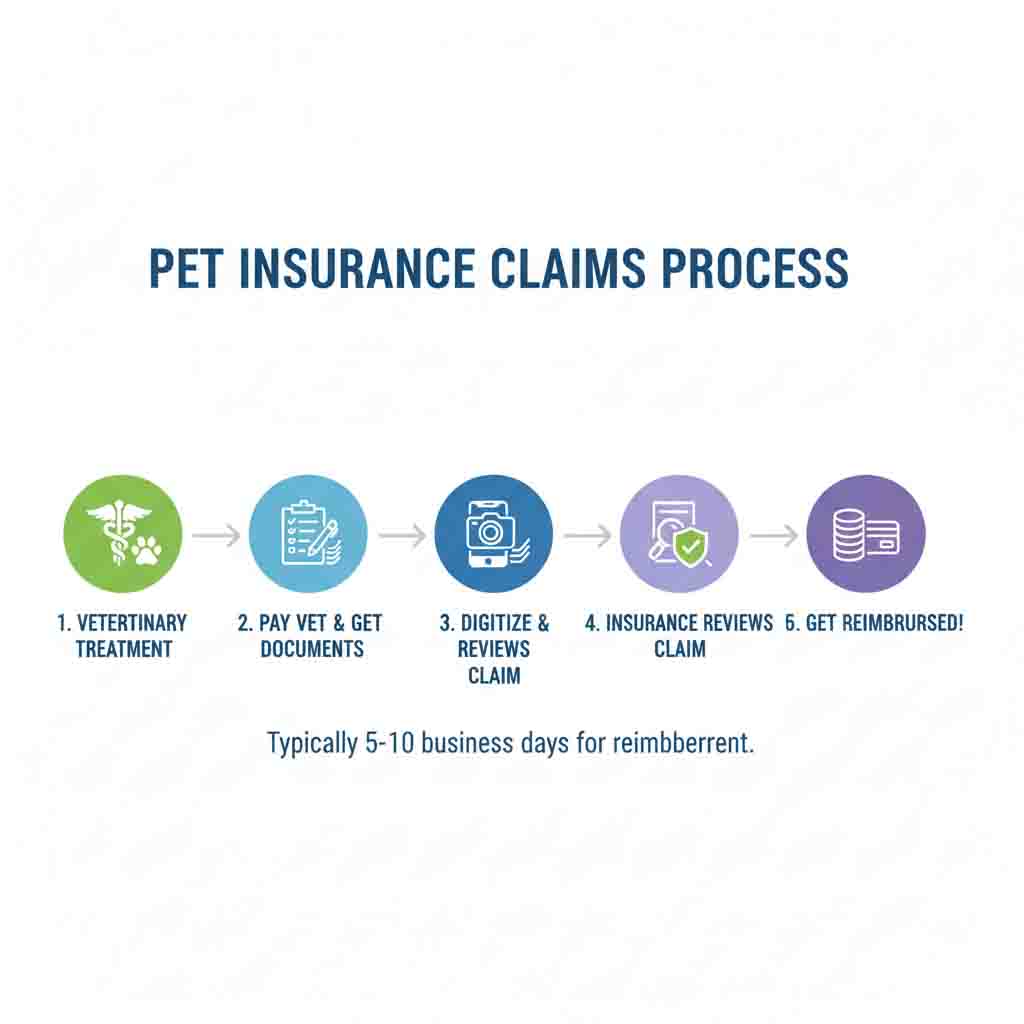Introduction: More Than a Policy, It’s a Financial Safety Net
As a pet insurance expert, I’ve seen how a single accident or illness can lead to stressful financial decisions. Pet insurance is designed to prevent that. Unlike human health insurance where the provider often bills the company directly, pet insurance operates on a reimbursement model. Understanding this core mechanic is the first step to leveraging its benefits, whether you’re in the United States, the United Kingdom, Canada, or Australia.
The Core Mechanism: The Reimbursement Model Explained
At its simplest, pet insurance works in three straightforward steps:
-
You Pay the Vet Bill: After your pet receives care, you pay the veterinarian’s invoice in full, just as you normally would.
-
You File a Claim: You then submit a claim to your insurance provider. This typically involves filling out a form and providing the itemized invoice and your pet’s medical records from that visit.
-
You Get Reimbursed: The insurance company reviews your claim against your policy’s terms. Once approved, they reimburse you for the covered amount directly, either by check or bank transfer.
This model is consistent across major pet insurance markets like the US, UK, Canada, and Australia. The key is that you are always in control of your pet’s veterinary care and are not limited to a “network” of providers.
Decoding Your Policy: Key Terms That Define Your Coverage
To understand what you’ll be reimbursed, you need to speak the language. Here are the universal components that shape your plan and its cost:
-
Annual Payout Limit: This is the maximum amount the insurer will pay per policy year. Limits can range from $5,000 to unlimited, varying by country and provider.
-
Deductible: This is the amount you must pay out-of-pocket each year before the insurance starts reimbursing you. A higher deductible usually means a lower monthly premium.
-
Reimbursement Percentage (Co-pay): After you meet your deductible, this is the percentage of the vet bill the insurer will pay. Common splits are 70%, 80%, or 90%. You pay the remaining percentage.
Example: With a $500 deductible and an 80% reimbursement rate, a $1,500 vet bill would work like this: You pay the first $500 (deductible). The remaining balance is $1,000. The insurance company reimburses you 80% of $1,000, which is $800. Your total out-of-pocket cost is $700 ($500 deductible + $200 co-pay).

Critical Timelines: Waiting Periods and Pre-existing Conditions
Two of the most important concepts to grasp are:
-
Waiting Periods: This is the time between when your policy starts and when coverage for certain conditions begins. For instance, a policy might have a 14-day waiting period for illnesses but only a 48-hour period for accidents. This is a standard practice globally to prevent fraud.
-
Pre-existing Conditions: This is the universal exclusion. Any illness or injury that showed signs before your policy started or during the waiting period will not be covered. The specific definition and tracking of these conditions can differ slightly between providers in North America versus the UK and Australia.
A Global Snapshot: What Pet Owners Should Know
While the fundamental mechanics are the same, there are nuances in different markets:
-
United States & Canada: The markets are largely similar, offering a mix of accident-only and comprehensive (accident + illness) plans. Wellness riders for routine care are a common add-on. Premiums are typically paid monthly.
-
United Kingdom: The UK market is mature, with lifetime policies being very popular. These policies renew the annual coverage limit each year, as long as the policy is continuously active. Many providers also offer multi-pet discounts.
-
Australia: Australian providers often distinguish between “accident-only” and “accident and illness” policies. A key feature to look for is “benefit schedules” versus “actual vet bills,” as some policies may pay a predetermined amount for a condition rather than the full invoice amount.
Conclusion: Empowering Your Pet’s Health Journey
Pet insurance is not a magical bill-payer but a powerful financial tool for managing unexpected veterinary costs. By understanding the reimbursement model, key policy terms, and critical exclusions, you can choose a plan that fits your budget and provides peace of mind. This allows you to focus on what truly matters: making the best healthcare decisions for your beloved companion without financial fear, no matter where you call home.



